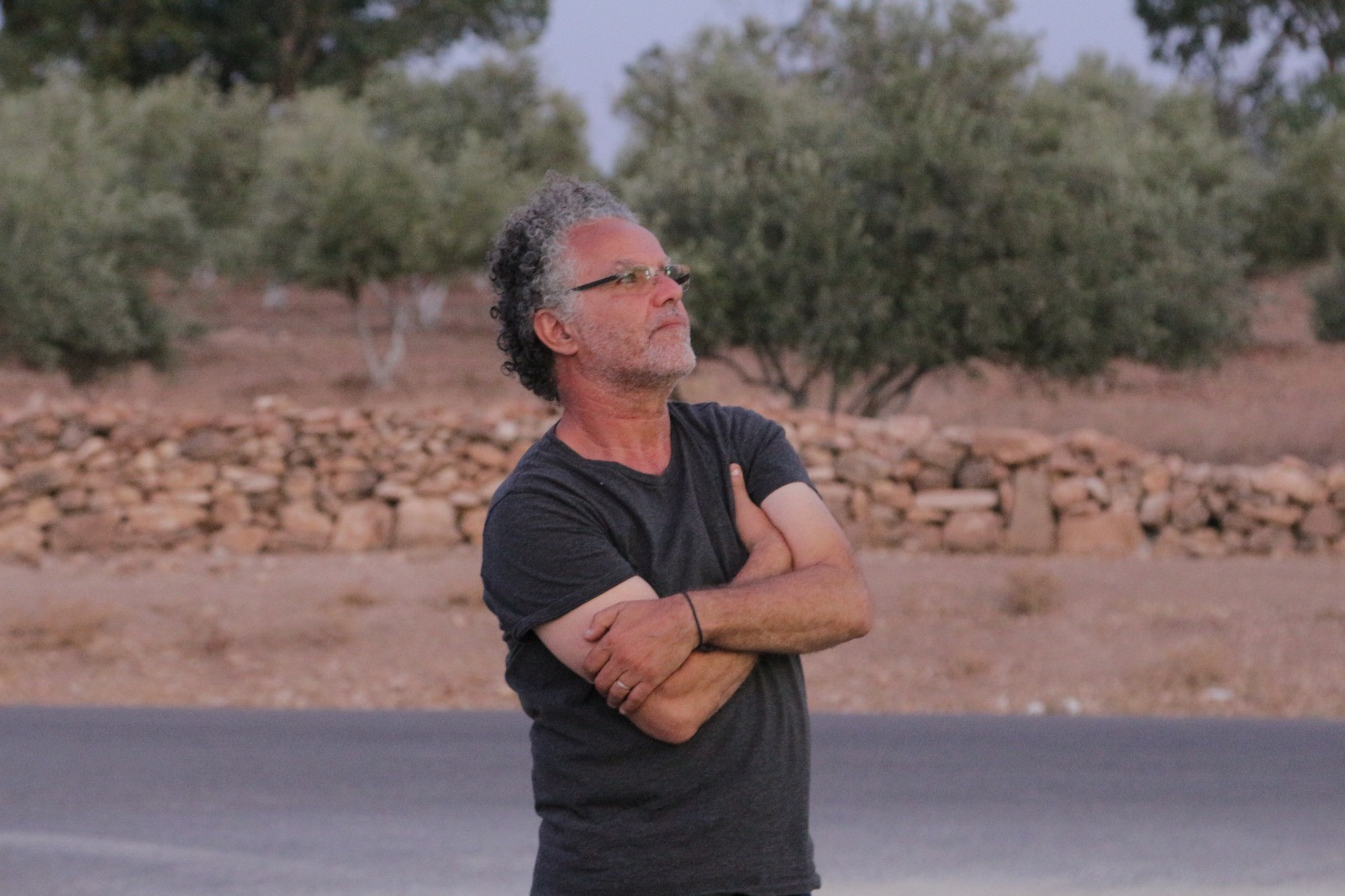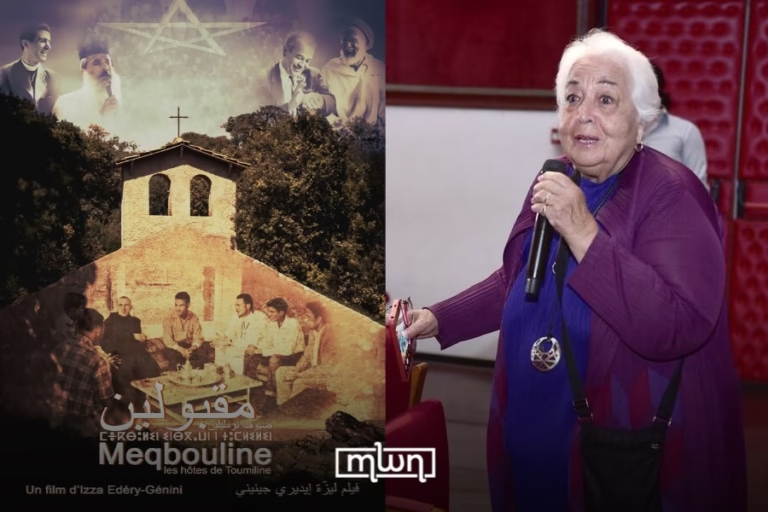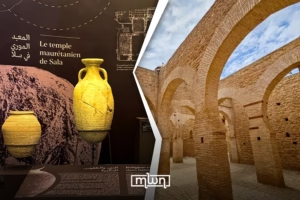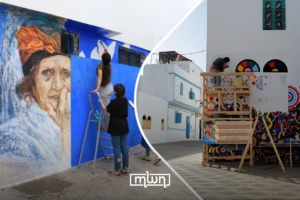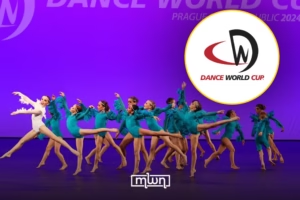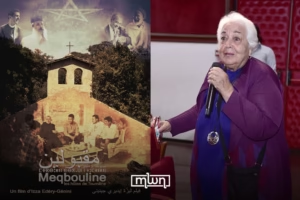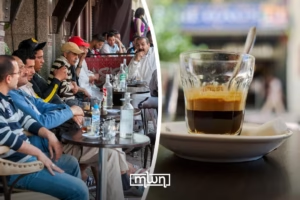Hundreds of black-and-white photographs, arranged in neat columns and rows, line the walls inside the home of US-based Moroccan director Hakim Belabbes. For the indefinite future, these photos — each representing a scene from his upcoming, untitled movie — will be rearranged, taken down, and put up again as Belabbes immerses himself in the often-tortuous yet spellbindingly artistic process of post-production editing.
And Belabbes is not afraid to admit his struggles. “It is giving me hell,” he told Morocco World News, voice laden with sincerity. He recounted how he often went off-script and rewrote scenes on the spot because he found himself in front of situations “that scream for [him] to capture them.” So each time he did, without knowing exactly where those scenes would fall in the actual narrative of the film, driven entirely by instinct and his fascination with destiny and fate.
“I am terrified, like literally terrified, because I don’t know how it’s gonna work,” he said.
But time and time again, this “vulnerable and hectic” editing process gave birth to acclaimed films that break traditional boundaries.
“Collapsed Walls” (2022), a mosaic of 18 different evocative stories, trains the camera unflinchingly on a dead body being washed or a young man suffocating his grandmother. “Fragments” (2011) witnesses the birth of Belabbes’s daughter and the live circumcision of a boy. In life and death, in cruelty and kindness, the filmmaker’s ten works escape simple description but remain irrepressibly human.
In our conversation, Belabbes talks in the same way he makes movies. He never gave a bureaucratic response that might please a conventional questioner, but rather offered a gentle yet complex flow of insights that, borrowing Belabbes’s description of his work-in-progress film, resembles “little streams that all run towards one main river.”
That river, I came to realize, is the portrait of a filmmaker who holds the bold pursuit of artistry above the commercial goals that dictate today’s film industries.

Belabbes gives instructions on the set of “Collapsed Walls.”
‘Of visual lyricism and poetry’
Belabbes was born and raised in Boujad, where his father owned the town’s only movie theater. Thus far, all of Belabbes’s film have been set in Boujad, but that is more happenstance than habit because he is open to filming elsewhere, such as Chicago where he studied, teaches, and has been residing for decades.
If he were to film in Chicago, Belabbes refuses to be pigeon-holed by what the industry may expect from a Moroccan: He would never make a stereotypical immigrant or Arab-American story that perpetuates one-dimensional images.
In fact, even the traditional narrative technique of exposition, rising action, climax, and resolution irks Belabbes.
“I always thought that there was something very fabricated with that [narrative technique],” he said. “I’m not interested in telling a straightforward story of some hero who overcomes some conflicts. That’s my tragedy in a sense because it took a while for people to accept the work that I do.”
When a film defies the confinement of a concise logline — a formulaic one-sentence summary — funding becomes a sticky issue. Belabbes recalls trying to pitch “Collapsed Walls” to a commission in Morocco. Two or three members of the commission understood Belabbes’s creative vision, but one asked Belabbes, “how can the dead talk?”
For anyone who has watched “Collapsed Walls,” the answer is clear. A little girl prays to God for her ghostly father’s return. A specter sings, strumming his guitar. A hot-blooded youth, challenged to a race by a skin-and-bones old man who then dies of exhaustion, watches the ethereal flares above the elderly’s grave. A mother cries over her daughter’s body and a daughter cries over her mother’s body. In this 18-story film, with an “out, out, brief candle” as its last scene, the dead can indeed talk.
“I was trying to make the point that I’m working, hopefully, at levels of visual lyricism and poetry,” Belabbes said.

Belabbes and his crew on the set of “Collapsed Walls.”
‘The human condition — the essence of storytelling’
It may seem that working on such a high level of artistry limits Belabbes’s films to a niche selection of educated cinephiles, but he is constantly surprised by how well a regular audience receives his work.
Must there be a line between a meaningful film and a commercial film that “puts butts in seats,” as Belabbes puts it? The filmmaker doesn’t have an answer. He hopes to make movies that an everyday person like his mother can understand, but he doesn’t want to follow a formula or trend.
The trend in Morocco today, he said, is that a comedy, no matter how sloppy, will hold in the box office. The audience is glued to the same images and sounds they are bombarded with that are “ubiquitous and beyond idiocy.” He wonders if Moroccans are not growing up with a viable visual literacy education, rendering them unable to distinguish between beauty and satisfaction.
Considering the “cinéma d’art et d’essai” (arthouse cinema) scene in France and the “indies” scene in the US, perhaps this fusion of popularity and poetry is possible. Belabbes mentions a number of internationally acclaimed films, including the big Oscar winner “Everything Everywhere All at Once,” which achieved both commercial success and unbridled artistry.
“I know a lot of people who thought [Everything Everywhere All at Once] was too crazy but whoever got to the end then realized it was just a very simple human story between a mother, her daughter, and her husband,” Belabbes said.
That human essence must remain the core of movie-making even as everything else changes. Here, Belabbes went on a meandering discussion of the evolutions in the entertainment industry. On the production end, computer-generated images (CGIs) and deep fakes could potentially erase the need for sets and actors. On the distribution end, streaming services are overtaking the communal, uninterrupted experience of moviegoing.
While Belabbes is scared that movies may be losing their humanity, he remains optimistic that people adapt and make the best out of new situations.
“The human condition — the essence of storytelling that is touching and from the heart — is all you have regardless of the type of vehicle to get to an audience. That’s one thing that I think will keep holding, hopefully,” he said.
I ended our conversation by asking Belabbes for his feedback on my interview techniques, trying to glean some insight from an experienced storyteller and a mentor to many young filmmakers. The response, I think, echoes his own approach to storytelling.
Referencing what he taught some Moroccan film students earlier that day, Belabbes said that filmmakers should not ask questions from a place of authority, but should instead conduct genuine conversations born out of personal curiosity and vulnerability.
“You don’t always get answers that you expect but you’re gracious enough to let me move through these little spaces with you, so thank you for that,” he told me.
Thank you, Hakim, for your films that take us through little spaces in the complicated galaxy known as humanity.

Belabbes converses with an actor on the set of “Collapsed Walls.”

